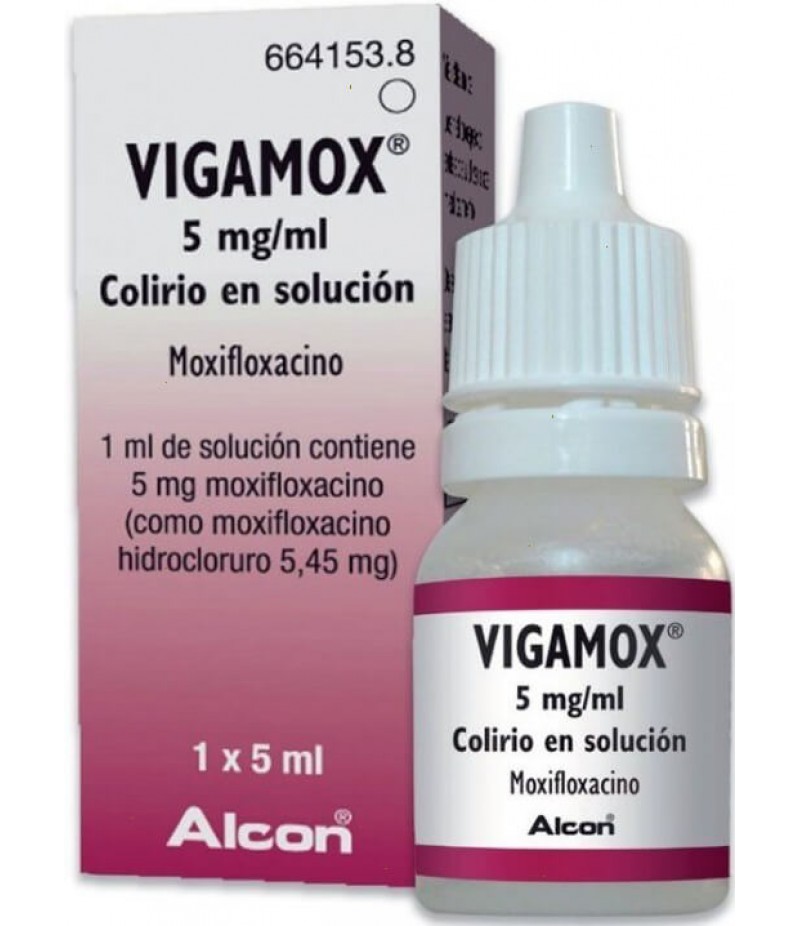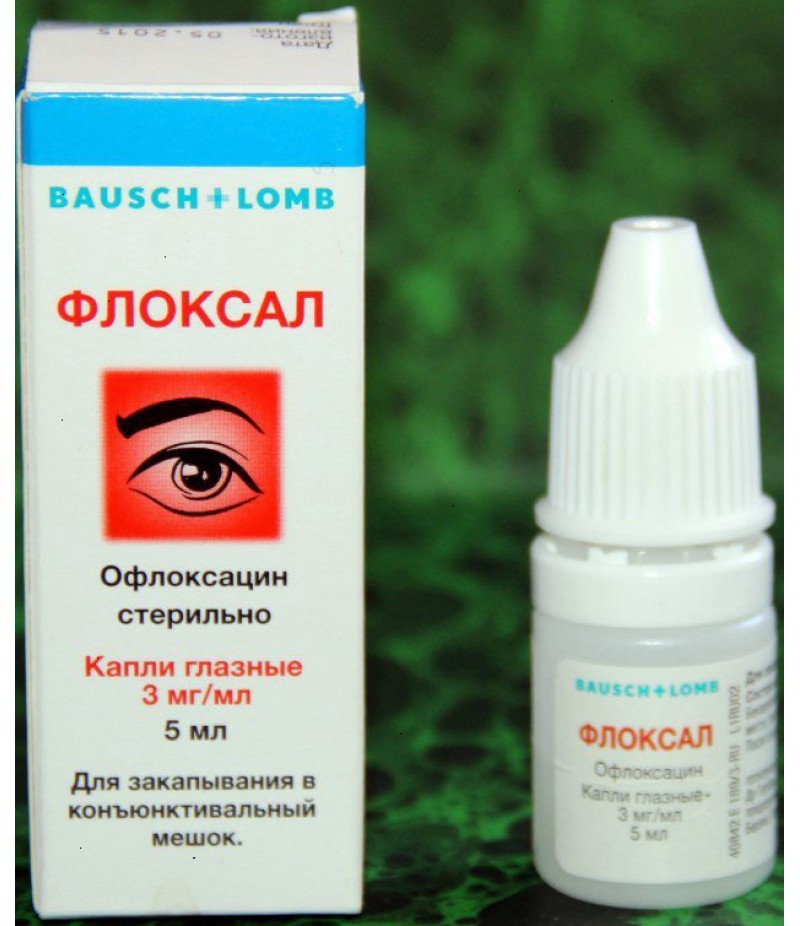Vigamox eye drops 0.5% 5ml
- $12.84
- 3 or more $12.50
- Availability:In Stock
Vigamox user manualReed more and buy Vigamox hereCompositionEye drops Vigamox contain 5.45 mg of moxifloxacin hydrochloride + excipients (boric acid, water, sodium chloride, hydrochloric acid, concentrated).Form of issueVigamox is..
Tags: drops
Vigamox user manual
Reed more and buy Vigamox here
Composition
Eye drops Vigamox contain 5.45 mg of moxifloxacin hydrochloride + excipients (boric acid, water, sodium chloride, hydrochloric acid, concentrated).
Form of issue
Vigamox is produced in the form of transparent colorless drops, in 5 or 3 ml bottles, in a carton of packs of one bottle.
pharmachologic effect
Antibacterial, for topical use.
Pharmacodynamics and pharmacokinetics
The active component of the drug is fluoroquinolone of the fourth generation, an antibiotic that inhibits the activity of DNA gyrase and topoisomerase 4. Thus, the replication and recombination of bacterial DNA, their renewal and reproduction become impossible.
Due to the mutation of gram-negative bacteria, they can develop resistance to this type of antibiotic. The likelihood of cross-resistance with beta-lactams, aminoglycosides and macrolides is extremely low.
Moxifloxacin is active against:
Gram-positive bacteria (Staphylococcus aureus, Streptococcus pyogenes group A, Streptococcus pneumoniae);
Gram-negative (Haemophilus influenzae, Escherichia coli, Haemophilus parainfluenzae, Klebsiella pneumoniae, Moraxella catarrhalis, Enterobacter cloacae);
other atypical species of bacteria (Chlamydia spp., Mycoplasma pneumoniae, Mycoplasma spp., Chlamydia pneumoniae).
In laboratory studies, moxifloxacin has been shown to be active against Streptococcus milleri, Staphylococcus saprophyticus, Streptococcus mitior, Staphylococcus epidermidis, Staphylococcus hominis, Providencia rettgeri, Enterobacter aerogenes, Enterobacter sakazaki, Enterobacter Intermedius, Morganella morganii, Str. agalactiae, Streptococcus dysgalactiae, Staphylococcus saprophyticus, St. haemolyticus, Enterobacter agglomerans, Proteus mirabilis, Proteus vulgaris, Providencia stuartii.
The same group includes anaerobes: Propionibacterium spp., Bacteroides distasonis, Porphyromonas magnus, Bacteroides ovatus, Bacteroides thetaiotaornicron, Clostridium perfringens, Prevotella spp., Bacteroides fragilis, Bacteroides eggerthii, Bacteroides uniformis, Porphyromonas anaerobius, Porphyromonas asaccharolyticus.
Also in vivo, the antibiotic inhibits the activity of Gram-negative microorganisms: Enterobacter agglomerans, Klebsiella oxytoca, Bordetella pertussis, Enterobacter intermedius, Proteus vulgaris, Providencia rettgeri, Providencia stuartii, Enterobacter aerogenes, Proteus mirabilis, Enterobacter sakazaki, Morganella morgana, Porphyromonas spp., Fusobacterium spp.
In the treatment of diseases caused by the above pathogens, the efficacy of the agent has not been proven. This group also includes Caxiella burnettii and Legionella pneumophila.
Eye drops with moxifloxacin do not exhibit phototoxic or photogenotoxic properties, unlike other means of the quinolone series.
At local use, the drug is absorbed into the systemic blood stream to a small extent, 1000 times less than when taken orally. The half-life of plasma is 13 hours.
Indications for use
The medication is prescribed for topical treatment of conjunctivitis and other inflammatory eye diseases caused by a number of bacteria that are sensitive to the effects of this antibiotic.
Contraindications
The drug is not recommended for use:
lactating women;
for children under the age of one year;
when allergic to any of the components, especially moxifloxacin.
Side effects
Adverse reactions that occur when using the drug are divided into local and systemic.
Local effects, in order of occurrence frequency:
pain and irritation on the eye mucosa;
hyperemia of the eye or conjunctiva, dryness;
puffiness, pinpoint keratitis, impaired vision, erythema of the eyelid, local hemorrhage (subconjunctival);
erosion, opacification and corneal defects;
the appearance of deposits on the cornea, uncharacteristic discharge from the eye, endophthalmitis, sensitivity to light, blepharitis, increased pressure (intraocular).
Systemic adverse reactions:
a taste disorder, a metallic or acidic taste in the mouth, a burning sensation;
paresthesia, headaches, discomfort in the nasal cavity, lump in the throat, nausea and vomiting, decreased hemoglobin;
heart palpitations, shortness of breath, rash and itching on the skin, allergic reactions.
Very rarely possible: anaphylactic shock, collapse, Quincke's swelling, fainting.
If any of the above reactions occur, you should inform your doctor about it, if you have an allergy, stop taking the medication.
Eye drops Vigamox, instruction (method and dosage)
Only for local ophthalmic use.
According to the instructions for the use of Vigamox, appoint one drop to the affected eye, up to 3 times a day. As a rule, the patient's condition improves after 5 days of taking the medication, however, the treatment should be continued for another 2-3 days.
If no improvement occurs within 5 days of taking the drug, you should consult a specialist.
For children older than one year, in patients with renal insufficiency and with liver disease, dosage adjustment is not required.
Overdose
There were no cases of overdose. If the excess amount of the drug has got into the eye, you can wash it with warm water.
Interaction
The interaction of this dosage form with other medicines has not been studied.
However, according to data on the interaction of antibiotic other forms of release, it can be combined with warfarin, probenicide, theophylline, digoxin, glibenclamide, rhinitidine, contraceptives (oral), drugs in the metabolism of which the enzyme P450 participates.
With caution combine with cisapride, neuroleptics, erythromycin, quinidine, sotalol, procainamide.
Storage conditions
Keep away from children, temperature from 2 to 25 degrees.
Shelf life - 2 years.
After the first use of the drug, its shelf life is reduced to a month.
special instructions
With prolonged use of the drug, other infections, for example, fungi, may occur.
In order not to contaminate the applicator, do not touch the tip of the bottle to different surfaces. After each use, the bottle should be tightly closed.
Because of the possibility of disturbing visual acuity, clouding in the eyes, it is not recommended to drive vehicles and operate mechanisms when taking the drug.
In pregnancy and lactation
The drug is not recommended for use during pregnancy and when breastfeeding.
Reviews about Vigamox
The drug is prescribed for conjunctivitis and barley, especially in children. According to reviews on eye drops Vigamox, they are effective enough, help quickly and for sure. However, many are confused by a large number of adverse reactions, most often allergic. Some prefer cheaper analogs.


